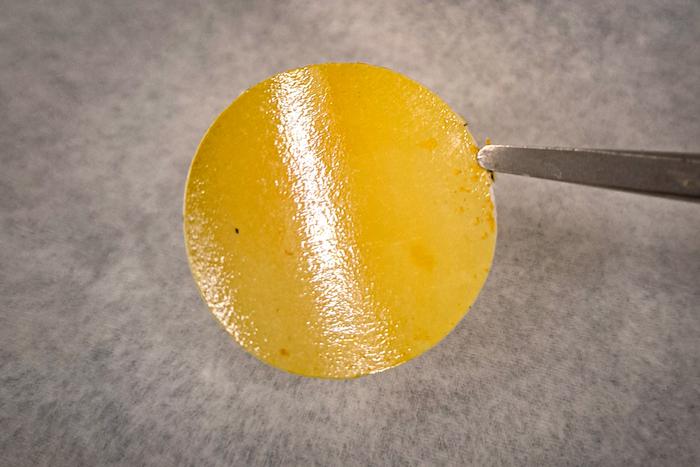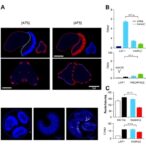
MIT engineers have recently unveiled a groundbreaking advancement in crude oil fractionation, a process that has long been recognized as both energy-intensive and a significant contributor to global carbon emissions. Traditionally, separating crude oil into gasoline, diesel, and other products requires substantial amounts of energy, predominantly utilized in heating methodologies that separate oil components based on boiling points. However, this new approach promises not only to revolutionize this separation process but also substantially lower the associated energy demands and environmental impacts.
At the heart of this innovation is a specially designed membrane that filters crude oil components based on their molecular sizes. This paradigm shift in separation technology is based on the concept of molecular sieving rather than relying on heat-driven processes. Zachary P. Smith, a prominent associate professor of chemical engineering at MIT and senior author of the study, articulated the novelty of this approach by emphasizing that it allows for the separation of molecules by their shape and size, which could redefine traditional methodologies.
The designed membrane is not just an incremental improvement; it represents a significant leap forward. Engineered to overcome the limitations of prior filtration technologies, this membrane is capable of efficiently separating both heavy and light hydrocarbons without succumbing to the swelling issues commonly faced by alternative membrane materials. Constructed as a thin film and leveraging existing manufacturing techniques, this membrane offers scalability for potential mass adoption in industrial contexts. This capability suggests it can be easily integrated into current oil processing infrastructures.
Research led by Taehoon Lee, a former MIT postdoctoral researcher now serving as an assistant professor at Sungkyunkwan University in South Korea, culminated in a paper published in the prestigious journal Science. Significantly, this membrane is fundamentally different from those traditionally used in oil separation, which have predominantly focused on polymers of intrinsic microporosity (PIMs). While those materials, such as PIM-1, facilitated rapid hydrocarbon transport, they often absorbed organic compounds excessively, leading to swelling and compromised filtration efficiency.
In a bid to circumvent these challenges, the MIT team explored modifying polymers utilized in reverse osmosis water desalination. Historically, reverse osmosis membranes, which have been in use since the 1970s, have dramatically decreased energy consumption in desalination processes by as much as 90 percent, representing a remarkable success story. This historical context laid a foundation for the team’s investigation into optimizing materials for hydrocarbon separation.
The membrane’s foundation rests on a specific polyamide that is produced via interfacial polymerization—a method acknowledged for its efficacy in generating membranes for water purification. During this polymerization process, a thin film is formed at the interface of a hydrophilic and a hydrophobic solution. The dynamics between these two liquid phases allow the compounds present within to react and create a solid film. In this study, the interaction between two distinct monomers enabled the formation of a membrane that significantly diverges from current oil filtration practices.
To address the limitations of polyamide membranes in hydrocarbon application, the researchers modified the chemical connections governing the monomers from amide bonds to more rigid and hydrophobic imine bonds. This alteration enhances the membrane’s ability to facilitate rapid hydrocarbon passage while minimizing swelling. The introduction of a monomer, triptycene, into the membrane framework further refined the pore dimensions, permitting preferential passage for hydrocarbons based on size.
The efficacy of this innovative filtration membrane was demonstrated through practical experimentation. The researchers tested its performance using a mixture of toluene and triisopropylbenzene, achieving a concentration of toluene twenty times greater than its original concentration without compromising the speed of filtration. Applying this technology to more complex industrial mixtures, including naphtha, kerosene, and diesel, revealed the membrane’s ability to separate these heavier and lighter components efficiently based solely on their molecular sizes.
The potential industrial ramifications of this technology could be profound. By employing a series of such membranes, oil processing facilities could significantly increase the yield and purity of desired products. In practice, this might resemble a novel crude oil fractionation column made of membranes that could replace traditional separation equipment, allowing for the efficient partitioning of molecules into their lighter and heavier counterparts.
Looking toward future applications, researchers believe that this technology is adaptable for widespread industrial use. The existing methodologies for interfacial polymerization used in water desalination can be revised to mass-produce these new membranes. This adaptability could facilitate the scaling of membrane manufacturing to meet the demands of modern oil processing, ultimately aiming toward reduced environmental impacts and enhanced efficiency.
The advancements made by the MIT team have not only theoretical significance but also present practical solutions to one of the most pressing issues in energy consumption and environmental sustainability. The prospect of reducing the energy required for crude oil fractionation by as much as 90 percent holds promise for transforming global oil processing protocols fundamentally.
Their work not only demonstrates a potent alternative strategy for hydrocarbon separation, but it also offers a roadmap towards achieving more sustainable industrial practices in the fossil fuel sector. With the backing of the MIT Energy Initiative and ExxonMobil, the ongoing development and refinement of these membranes could forge a path towards cleaner energy solutions and reduced carbon footprints in the oil industry.
Such innovations from institutions like MIT illustrate the transformative potential of interdisciplinary research, harnessing insights from materials science and chemical engineering to solve real-world problems. As the world grapples with the challenges of sustainability, advancements like those made with this membrane technology may illuminate the path forward in balancing energy demands and environmental responsibilities.
Subject of Research: Development of a membrane that separates crude oil components by molecular size
Article Title: Microporous polyimine membranes for efficient separation of liquid hydrocarbon mixtures
News Publication Date: 22-May-2025
Web References: 10.1126/science.adv6886
References: MIT Energy Initiative, ExxonMobil
Image Credits: MIT
Tags: advancements in chemical engineering at MITbreakthrough technologies in crude oil processingcrude oil fractionation technologyenergy-efficient oil separation methodsenvironmental impact of oil refining processesfuture of energy-efficient crude oil separationinnovative filtration methods for hydrocarbonslowering energy consumption in petroleum extractionmembrane technology in petroleum refiningmolecular sieving in crude oilreducing carbon emissions in oil processingsustainable energy solutions in oil industry



